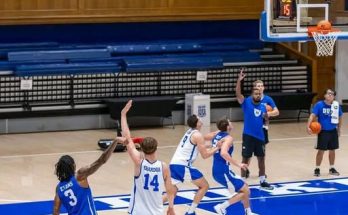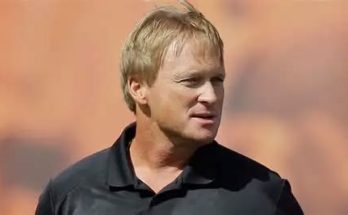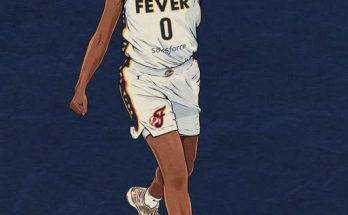When it comes to historic NFL franchises, the Chicago Bears stand at the pinnacle of football tradition, grit, and pride. Their legacy is one stitched tightly into the fabric of the league’s early days and carried forward by generations of iconic players and unforgettable moments. The story of the Bears is one that conjures memories of mud-soaked battles, defensive fortresses, and a fanbase that’s as resilient as the team they support. From the early days of George Halas to the unforgettable 1985 season, and the sheer brilliance of Walter Payton, every flashback to Chicago Bears glory carries with it echoes of Soldier Field roars and the deep, unshakable heartbeat of the Windy City.
Foundations of a Franchise
The Chicago Bears were founded in 1919 as the Decatur Staleys before moving to Chicago in 1921 and adopting the “Bears” name. Under the leadership of George Halas—known simply as “Papa Bear”—the team quickly became a cornerstone of the NFL. Halas wasn’t just a coach or owner; he was an architect of the professional game itself. The Bears were part of the NFL’s earliest championship games, and by the 1940s, they were the league’s first dynasty. Halas led them to six championships during his tenure.
In those early years, the Bears were synonymous with physical dominance. They revolutionized the T-formation offense and fielded legendary players like Bronko Nagurski, Red Grange, and Sid Luckman. But even after Halas stepped away from coaching, his imprint remained. The Bears became a team known for hard-nosed football—a trait that would come to define them for decades.
Walter Payton: The Soul of Chicago
Perhaps no player embodies the heart and soul of the Chicago Bears more than Walter Payton. Nicknamed “Sweetness,” Payton redefined what it meant to be a running back in the NFL. Drafted fourth overall in 1975, Payton’s career would span 13 seasons, all with Chicago. He retired as the NFL’s all-time leading rusher with 16,726 yards—a record that stood until Emmitt Smith surpassed it years later.
Payton was more than just stats. He was style, power, grace, and toughness. Known for never running out of bounds to avoid a hit, Payton took pride in fighting for every yard. He leapt over defenders with iconic hurdles and broke tackles with relentless determination. Fans filled Soldier Field every Sunday hoping to witness one more impossible run from #34. He was, simply put, a once-in-a-lifetime player.
One of Payton’s defining characteristics was his versatility. He could run, catch, throw, and block—doing whatever it took to help his team win. In an era of specialized players, Payton stood out as the ultimate all-purpose back.
Even after his retirement in 1987, Payton remained deeply tied to the Bears’ legacy. His untimely passing in 1999 left a hole in the hearts of Bears fans everywhere, but his name continues to be honored, notably with the NFL’s Walter Payton Man of the Year Award, which celebrates excellence on and off the field.
The Mike Ditka Era: Fire, Glory, and Dominance
If Walter Payton was the soul of the Bears, Mike Ditka was the fire. A Hall of Fame tight end who played for the team in the 1960s, Ditka returned to coach the Bears in 1982 and led the team through its most dominant modern era. With his trademark mustache, sunglasses, and no-nonsense demeanor, Ditka became an icon in his own right.
Ditka’s teams were known for their toughness, discipline, and defensive supremacy. His arrival coincided with the formation of one of the greatest defenses in NFL history, led by defensive coordinator Buddy Ryan. The two had a famously tumultuous relationship, but their partnership created magic on the field.
The 1985 Chicago Bears remain one of the greatest single-season teams in NFL history. They went 15-1 in the regular season, dismantling opponents with a suffocating defense and a bruising ground game. Their only loss came at the hands of the Miami Dolphins on Monday Night Football, but it only fueled their fire.
In the playoffs, the Bears were virtually untouchable. They shut out the New York Giants and Los Angeles Rams before obliterating the New England Patriots in Super Bowl XX, 46-10. That team was larger than life—literally and figuratively. With personalities like Jim McMahon, William “The Refrigerator” Perry, Richard Dent, and Mike Singletary, they were a media sensation.
Who can forget the “Super Bowl Shuffle,” a music video recorded before they won the title, which became a cultural phenomenon? Only a team as dominant—and confident—as the ’85 Bears could pull it off.
Soldier Field: A Cathedral of Football
Soldier Field, located near downtown Chicago along the lakefront, is more than just a stadium—it’s a sacred ground for Bears fans. Originally opened in 1924, the stadium has undergone renovations over the years but has always retained its historic essence. Cold, windy, and often treacherous in the late season, Soldier Field represents everything gritty about football in Chicago.
The roar of the crowd at Soldier Field isn’t just noise—it’s a tradition. Generations of fans have bundled up in bitter weather to cheer their Bears to victory (or stick with them through heartbreak). The sight of a snow-covered field with Walter Payton plowing through defenders or Brian Urlacher flying to make a tackle is pure football nostalgia.
From hosting Army-Navy games in its early days to becoming the permanent home of the Bears in 1971, Soldier Field has been witness to decades of history.
The Monsters of the Midway
Throughout their history, the Bears have been known as the “Monsters of the Midway,” a nickname rooted in the team’s defensive prowess. The 1985 team solidified the moniker, but it has been carried forward by great defenders across generations—Dick Butkus, Mike Singletary, Brian Urlacher, Lance Briggs, Charles Tillman, and Khalil Mack.
Bears defenses have long embodied the team’s identity: tough, relentless, and uncompromising. Whether it was Butkus snarling at quarterbacks in the 1960s or Urlacher commanding the middle of the field in the 2000s, the defense was always the heart of the team.
The legacy of the Monsters of the Midway is still a point of pride for the franchise. Even when the offense struggled, Bears fans could always count on their defense to bring the heat.
A Legacy of Loyal Fans
Bears fans are among the most passionate and knowledgeable in the NFL. Whether the team is contending or rebuilding, Soldier Field fills with loyal supporters clad in navy and orange. Tailgates start early, chants echo through parking lots, and Sundays become rituals.
The fans’ devotion is generational. Grandparents who watched Sid Luckman hand the ball off to Bronko Nagurski now watch games with grandchildren decked out in Justin Fields jerseys. The highs are celebrated with unbridled joy; the lows are endured with stoic resolve.
What separates Bears fans is their deep connection to the city itself. Chicago is a blue-collar, tough-minded town, and its football team mirrors that identity. Through brutal winters and heartbreaking seasons, fans stick with their team, always believing that the next era of glory is around the corner.
Modern Echoes and Continued Hope
Though the Bears have not returned to their Super Bowl-winning heights since 1985, there have been glimmers of hope. The 2006 team led by Lovie Smith reached the Super Bowl, falling short against Peyton Manning’s Colts. The emergence of defensive stars like Khalil Mack and Akiem Hicks in the late 2010s brought renewed excitement.
Now, with a new generation of talent and the 2024 NFL Draft bringing top picks to Chicago, including the highly anticipated quarterback Caleb Williams, hope once again swirls around the city. Fans dream of recapturing that glory, of hearing Soldier Field erupt once more as the Bears march toward greatness.
Even in lean years, the franchise’s history remains a source of pride. Every time the team steps onto the field in their classic navy uniforms, it’s a reminder of where they’ve been—and where they could go again.



